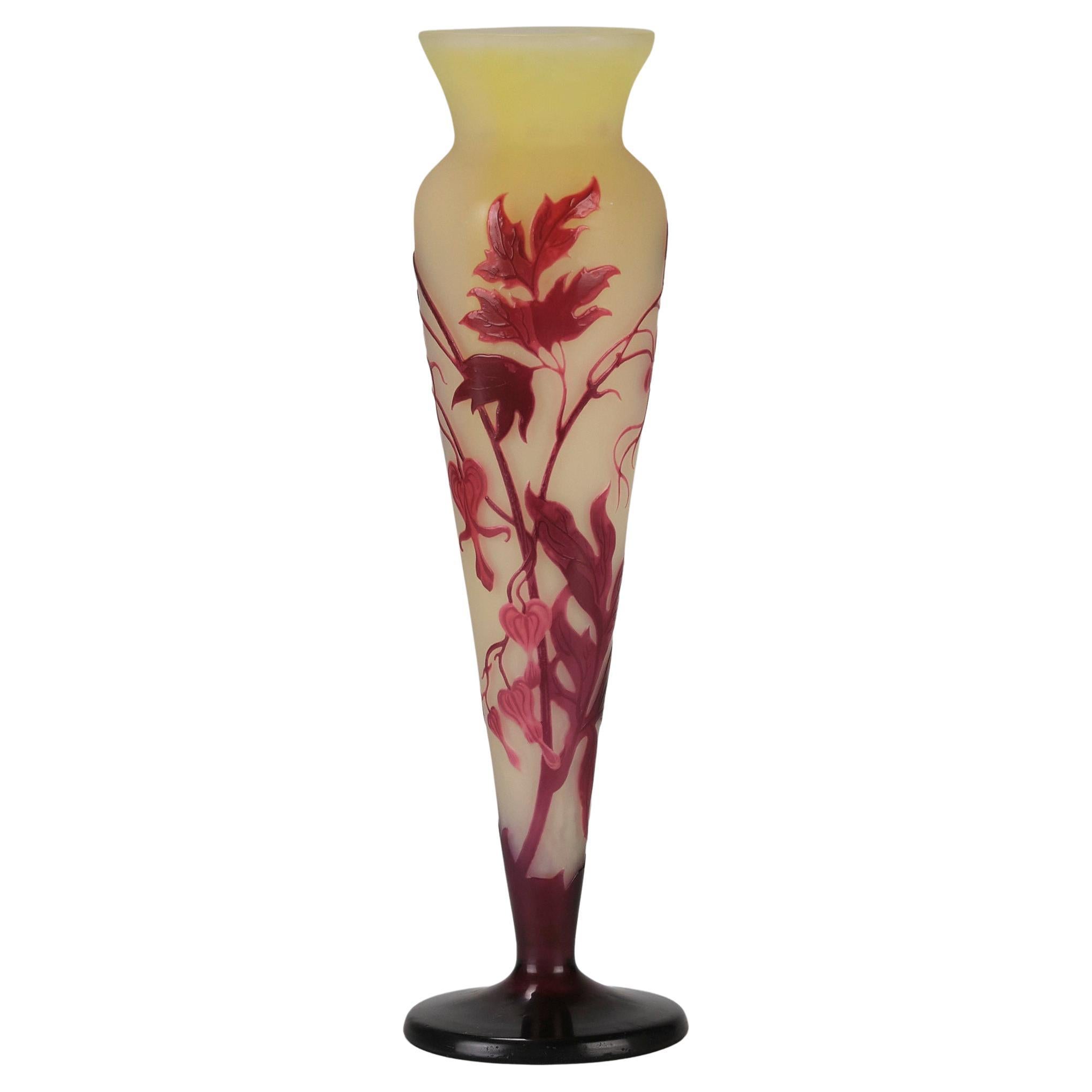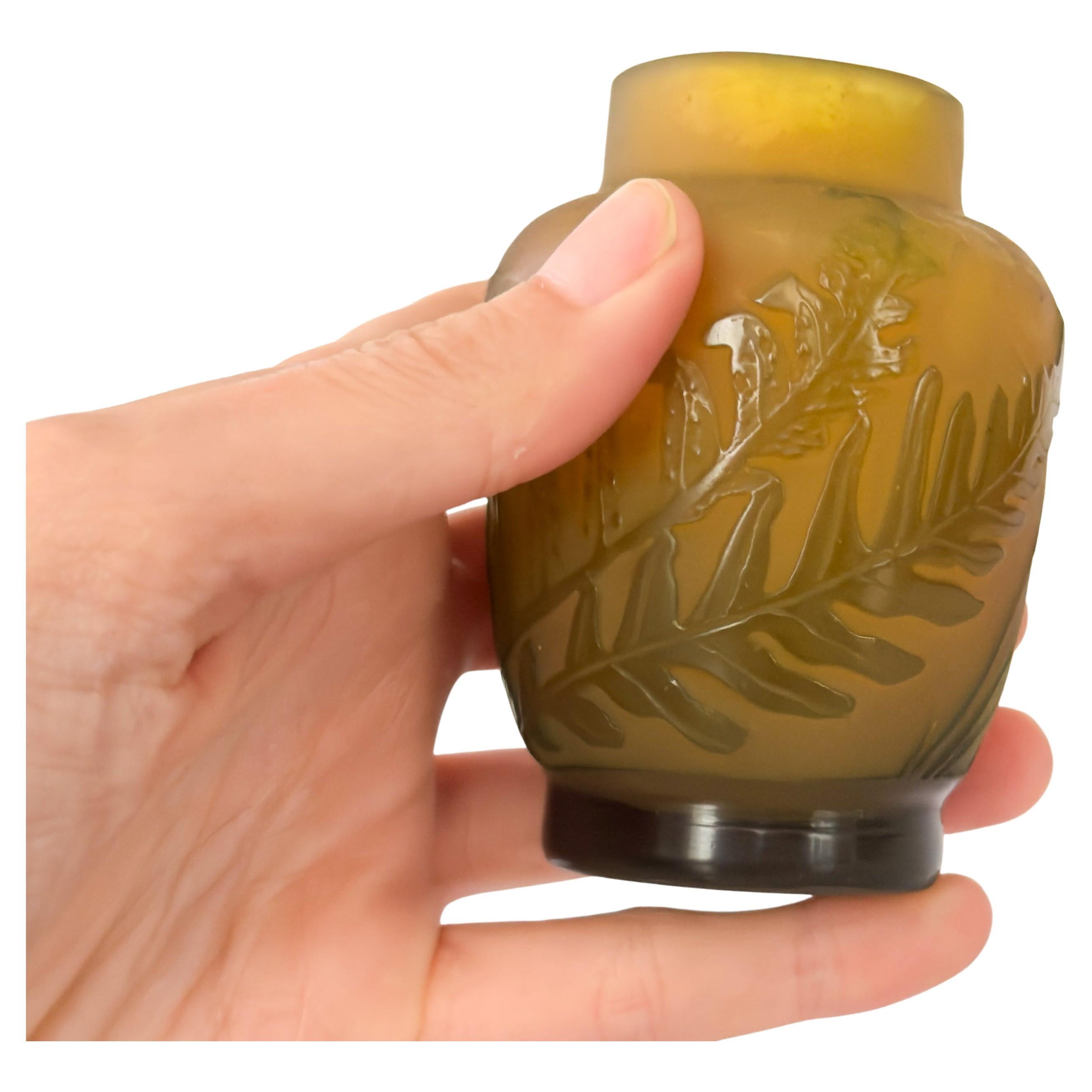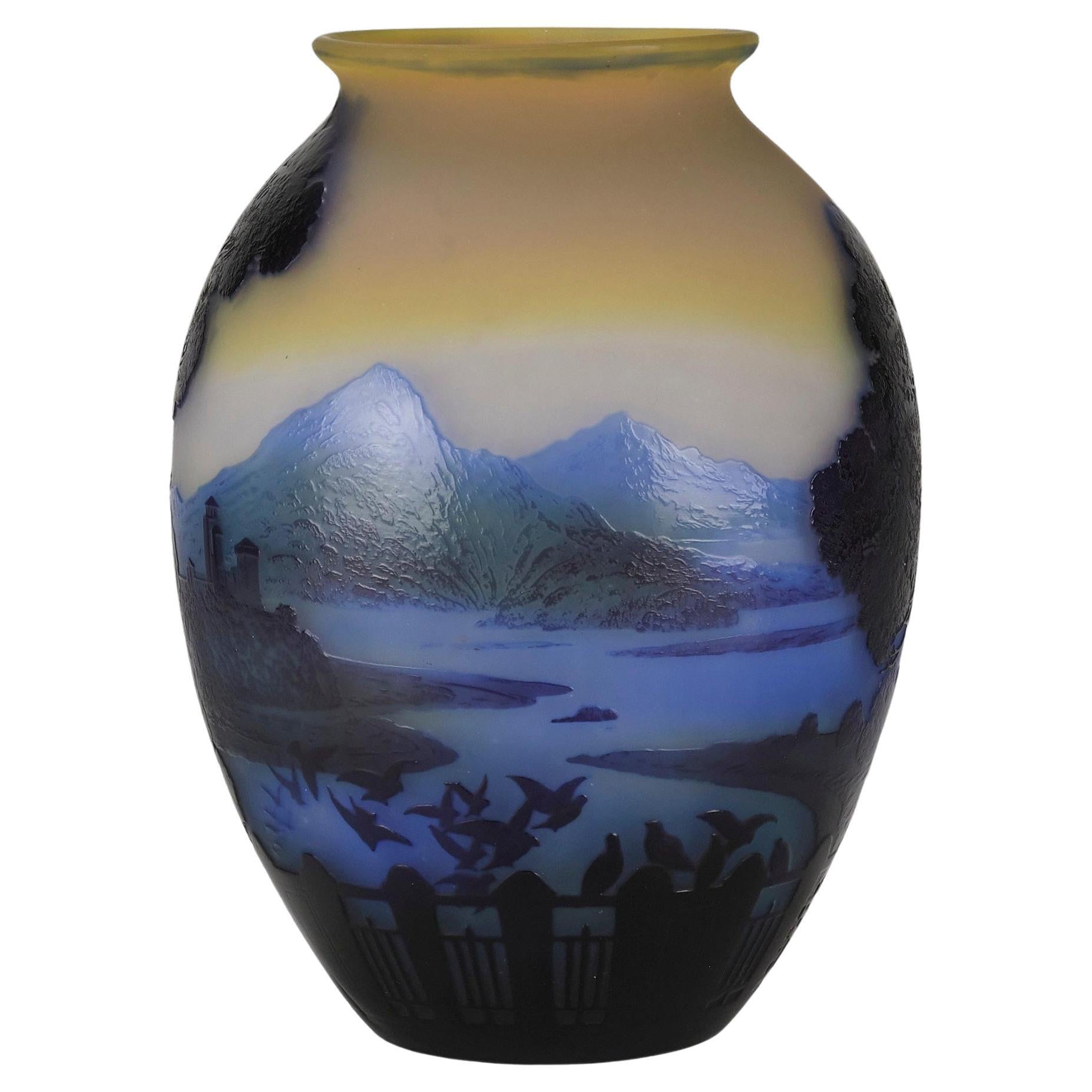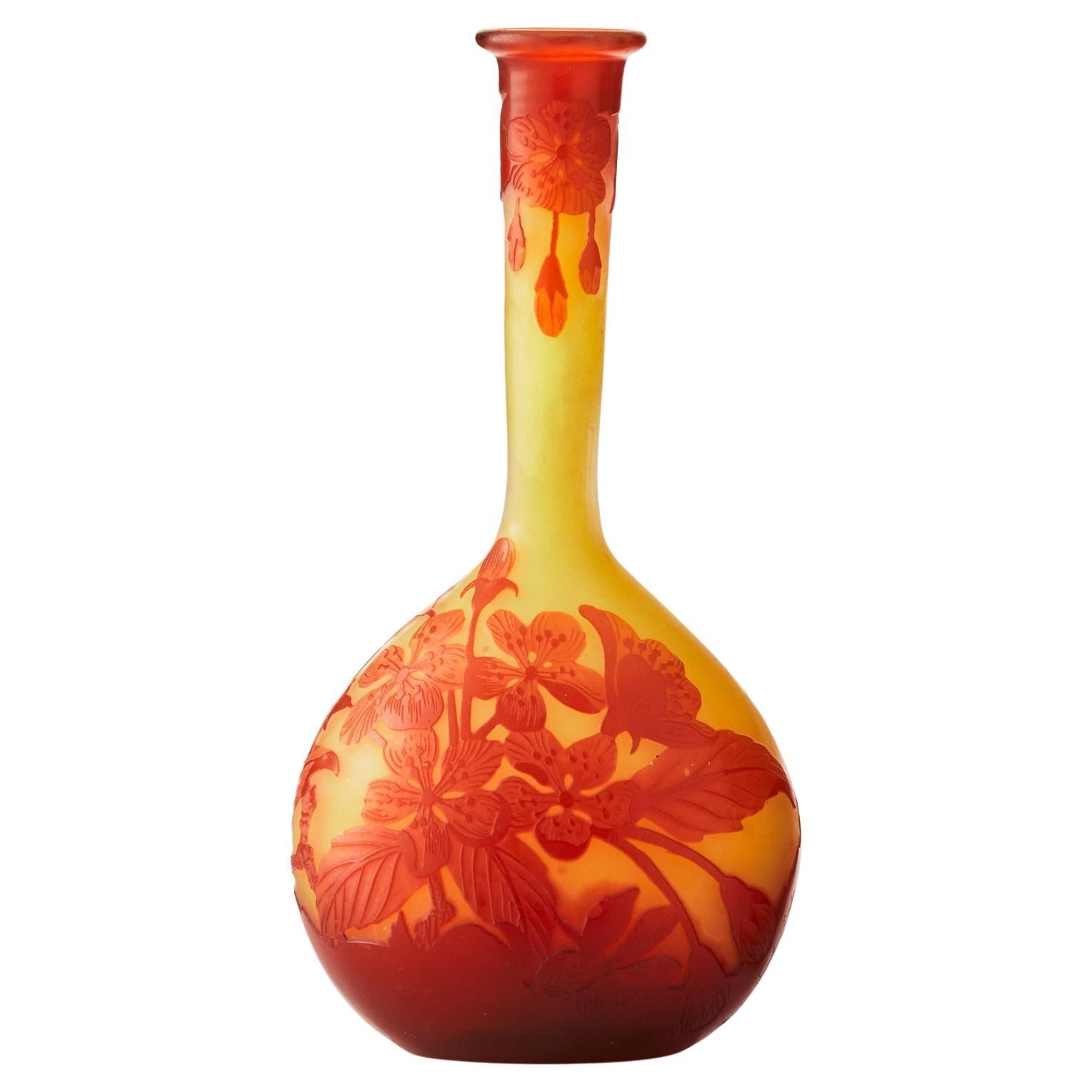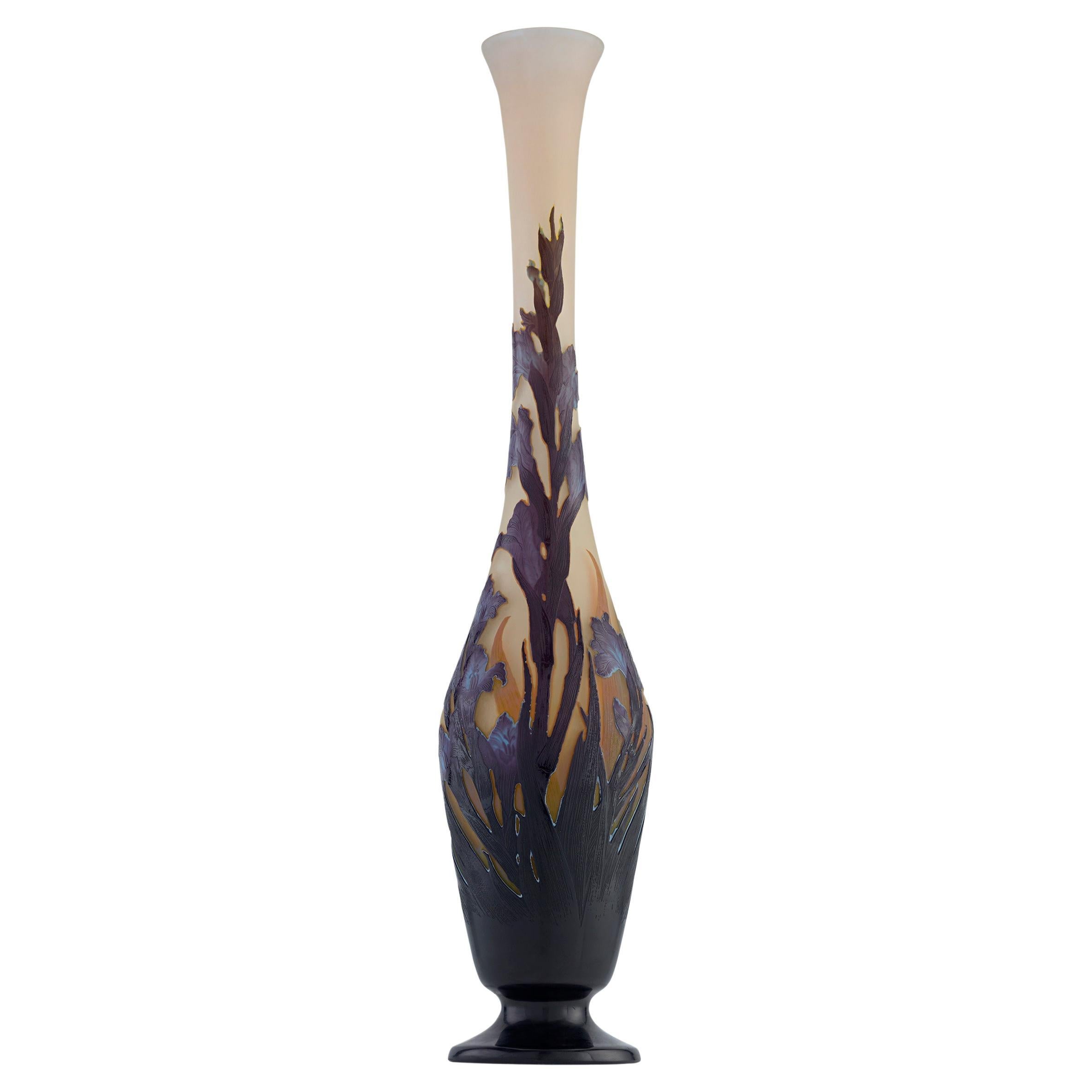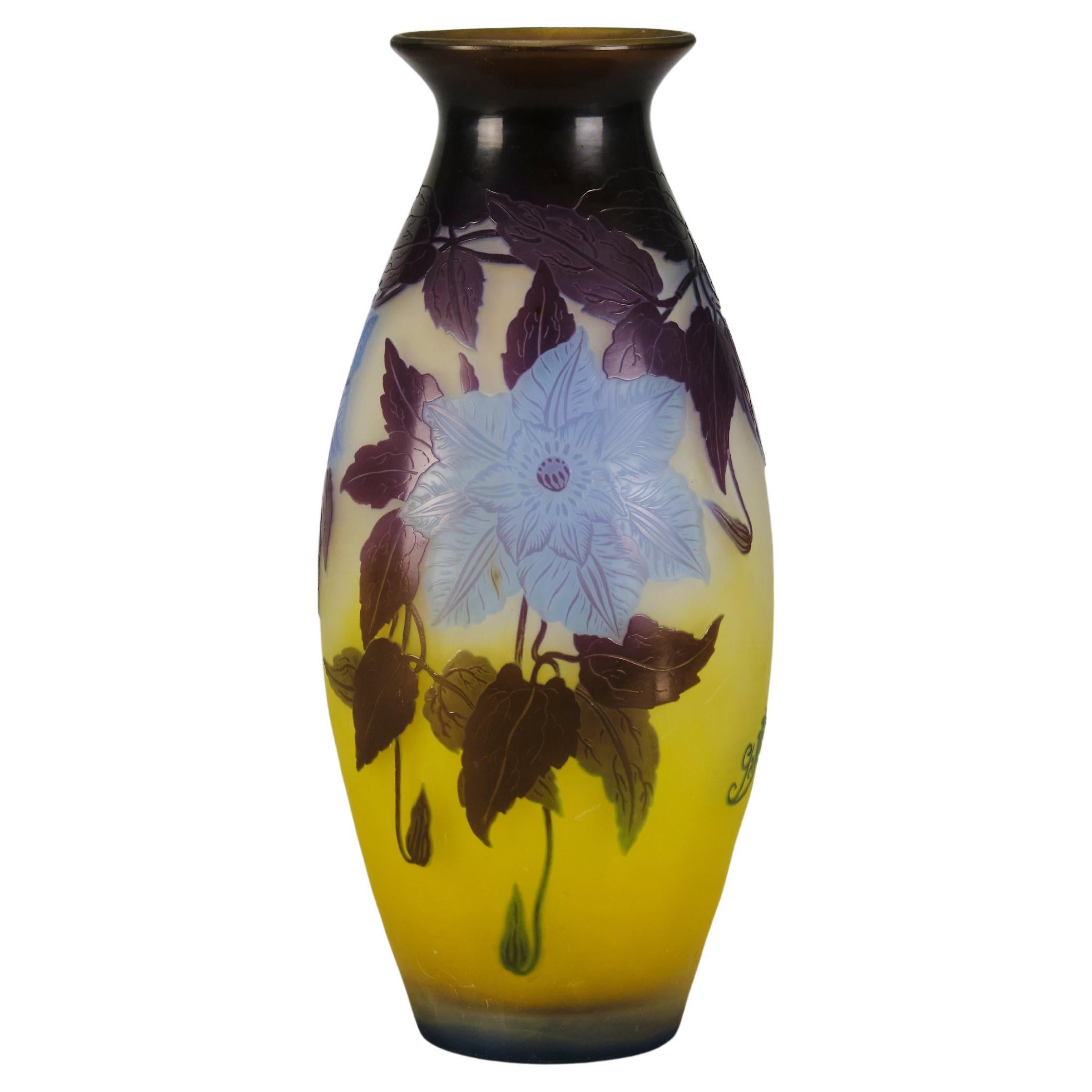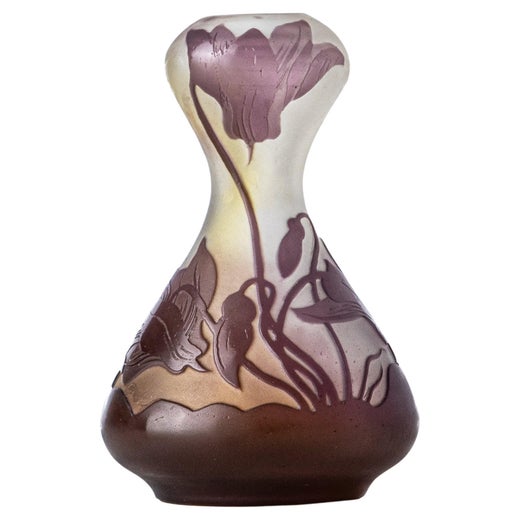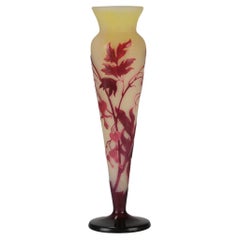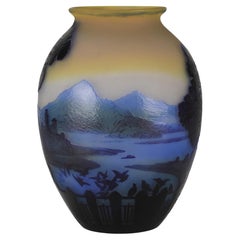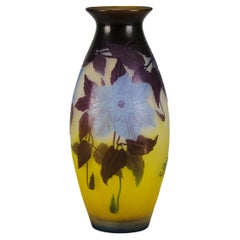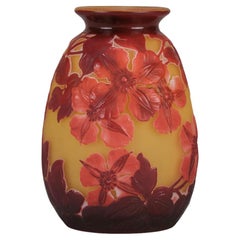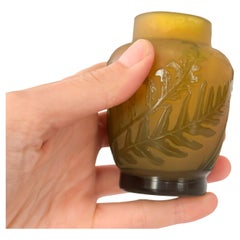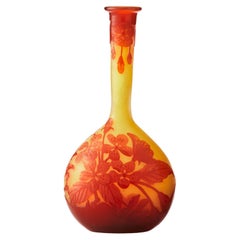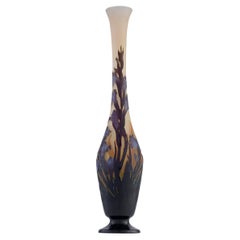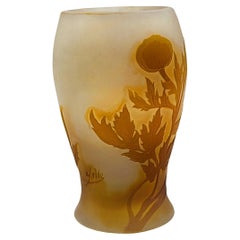Early 20th Century French Cameo Glass "Dragonfly Banjo Vase" by Emile Gallé
Acerca del artículo
- Creador:Émile Gallé (Artista)
- Dimensiones:Altura: 16,5 cm (6,5 in)Anchura: 8,5 cm (3,35 in)Profundidad: 4 cm (1,58 in)
- Estilo:Art Nouveau (Del período)
- Materiales y técnicas:Vidrio,Moldeado
- Lugar de origen:
- Época:
- Fecha de fabricación:1900
- Estado:Desgaste acorde con la edad y el uso.
- Ubicación del vendedor:London, GB
- Número de referencia:Vendedor: 67081stDibs: LU3216345292862
Émile Gallé
"El arte por el arte" era una creencia firmemente defendida por el célebre diseñador y vidriero francés Émile Gallé. A través de sus etéreos jarrones de cristal, otras vasijas y lámparas, que adornó con motivos botánicos y religiosos, Gallé impulsó la ideología Art Nouveau y lideró el renacimiento moderno del cristal francés.
Gallé era hijo del exitoso fabricante de loza y muebles Charles Gallé, pero estudió filosofía y botánica antes de dedicarse a la fabricación de vidrio. Sin embargo, los conocimientos botánicos del joven Gallé influirían en su estilo de diseño y se convertirían en su firma durante generaciones.
Tras aprender el arte del vidrio, Gallé fue a trabajar a la fábrica de su padre en Nancy. Inicialmente creó objetos de vidrio transparente, pero más tarde empezó a experimentar con capas de vidrio de colores intensos.
Mientras que vidrieros de Murano habían aplicado capas de vidrio y color en objetos decorativos antes que Gallé, éste era siempre aventurero en su noreste de Francia, aprovechando los defectos que se materializaban durante sus procesos y grabando en ellos formas naturales, como insectos como libélulas, vida marina, el sol, vides, frutas y flores modeladas a partir de especímenes locales.
A Gallé también se le atribuye la recuperación del vidrio camafeo, un estilo de cristalería que originó en Roma. Utilizaba cabujones, que eran decoraciones aplicadas de vidrio en relieve coloreadas con óxidos metálicos y hechas para que parecieran ricas joyas. Los jarrones y vasijas de vidrio camafeo de Gallé fueron muy populares en la Exposición de París de 1878, consolidando su posición como diseñador de talento y pionero.
A finales del siglo XIX, Gallé lideró los avances en la producción en serie y empleó a cientos de artesanos en su taller.
La botánica y la naturaleza siguieron siendo grandes fuentes de inspiración para la vidriería del artista, al igual que lo habían sido para otros diseñadores del Art Nouveau. Aproximadamente de 1890 a 1910, los talentosos diseñadores del movimiento produjeron muebles, vidrio y arquitectura en forma de -o adornados con- árboles, flores y enredaderas suavemente entrelazados. Pero Gallé tenía muchos intereses, como el arte oriental y la cerámica . La colección japonesa que visitó en el Victoria and Albert Museum de Londres (entonces Museo de South Kensington) durante la década de 1870 también le había impresionado.
Liberándose de las rígidas tradiciones victorianas de , Gallé infundió nueva vida y espíritu al arte y el diseño de su época mediante recipientes de vidrio exquisitamente elaborados y nuevas técnicas pioneras de trabajo del vidrio.
Encuentra una colección de jarrones Émile Gallé y otros muebles y objetos decorativos en 1stDibs.
- EnvíoRecuperando presupuesto…Envío desde: London, Reino Unido
- Política de devolución
Más de este vendedor
Ver todoprincipios del siglo XX, Francés, Art Nouveau, Jarrones
Vidrio
principios del siglo XX, Francés, Art Nouveau, Jarrones
Vidrio
principios del siglo XX, Francés, Art Nouveau, Jarrones
Vidrio
principios del siglo XX, Francés, Art Nouveau, Jarrones
Vidrio
principios del siglo XX, Francés, Art Nouveau, Jarrones
Vidrio
principios del siglo XX, Francés, Art Nouveau, Jarrones
Vidrio
También te puede gustar
principios del siglo XX, Francés, Art Nouveau, Jarrones
Vidrio artístico
Antiguo, Principios del 1900, Francés, Art Nouveau, Jarrones
Vidrio
siglo XX, Francés, Art Nouveau, Jarrones
Vidrio
siglo XX, Francés, Art Nouveau, Jarrones
Vidrio artístico
Antiguo, Principios del 1900, Francés, Art Nouveau, Jarrones
Vidrio artístico
principios del siglo XX, Francés, Art Nouveau, Jarrones
Vidrio artístico
